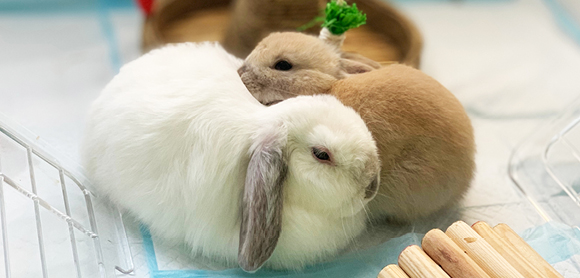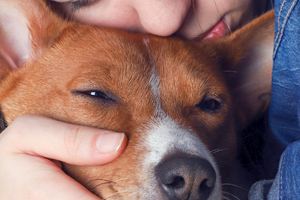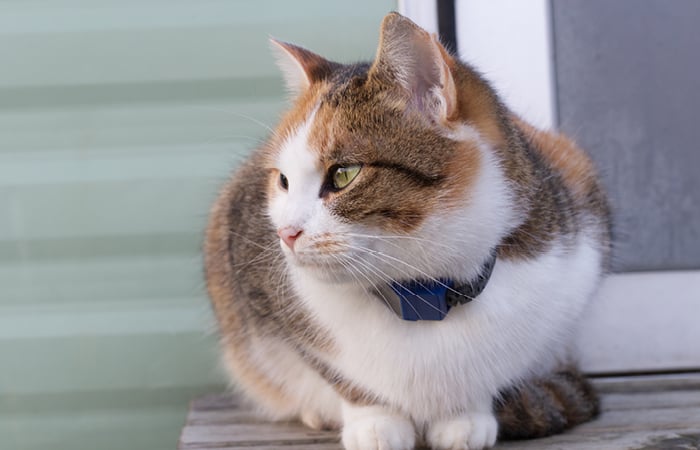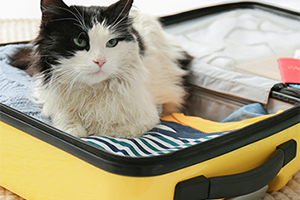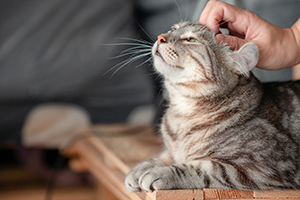How to give your cat or dog their medicine
How to give your dog tablets with food
First, check with your vet that the prescribed tablets can be given with food or if they need to be administered on an empty stomach.
If they can be given with food, the easiest way to give your dog medicine is to hide them in a small amount of food. By offering your dog a small amount of their normal food for breakfast or dinner, they’re more likely to eat it – and the tablets! You can then give your dog the rest of their food as normal.
If that doesn’t work, try wrapping the tablet in soft food like a small chewy treat or a piece of cheese. The treat needs to be small enough that your dog can swallow it without chewing. Dogs are very clever and if there’s a taste or texture they don’t like, they may eat the treat and spit out the tablet! Try asking your dog to sit and give them a couple of treats before offering the treat with the tablet concealed inside it.
How to give your dog tablets without food
How to give your dog liquid medicine
Any liquid medicine should come with a dropper or syringe. Place the correct amount of liquid into the dropper or syringe and then ask your dog to sit. Hold their head, but don’t tilt it back as this may mean they inhale the medicine, which can make them splutter.
Place the tip of the syringe or dropper into the corner of your dog’s mouth, between the cheek and teeth. Make sure the tip is pointing towards the back of their throat and then empty the medicine into their mouth while still holding their mouth closed. Massage their throat to encourage them to swallow. Again, stay calm and offer lots of encouragement, followed by a treat.
How to give your cat tablets with food
As with dogs, you’ll first need to check whether the tablets can be given with food or on an empty stomach.
If they can be given with food, try mixing a tablet with a small piece of your cat’s usual breakfast or dinner. Another option to give your cat medicine is to push the tablet into the centre of a high-value treat, such as a small piece of chicken.
How to give your cat tablets without food
Cats are notoriously reluctant to take tablets, so the chances are you will have to contend with sharp claws while trying to administer any medicine.
- It’s best to involve two people at first – one person should gently hold your cat while you administer the tablet. Once your cat becomes used to being given a tablet, you may be able to manage this process on your own. The key is to remain calm and relaxed, which will hopefully help your cat to remain calm as well.
- The person helping you should hold your cat on a stable, non-slip surface. Keep your cat standing upright, facing away from your helper. Your helper should prevent your cat from going backwards while also holding their hands around your cat’s chest to prevent them from lifting their front legs.
- Now you can take the tablet and hold it between the thumb and forefinger of one hand. Alternatively, you can use a pill popper (a device that holds the tablet in a soft-ended tip, avoiding the need to place your fingers inside your cat’s mouth).
- Place your other hand over the top of your cat’s head. It’s best to approach from the side rather than from above as this is less threatening for your cat.
- Hold your cat’s head gently, but firmly, by placing your thumb and fingers either side of the head, at the level of your cat’s top lip. Be sure not to bend the whiskers since your cat will find this uncomfortable.
- Gently tilt your cat’s head upwards, until your cat’s nose is pointing towards the ceiling. Your cat will partially open its mouth when its head is in the correct position. Use the middle finger of the hand holding the tablet to open their lower jaw, thereby opening their mouth.
- Keep your cat’s head pointed upwards and quickly place the tablet as far back on your cat’s tongue as possible. Aim for the centre of the tongue, as far back as you can see – the further back the tablet goes, the more likely your cat is to swallow it!
- Hold your cat’s jaw closed for a few seconds, then allow them to lower their head and wait for them to swallow, which will be followed by them licking their lips. Gently rub their throat under the chin.
- Sometimes your cat may not swallow the tablet at the first attempt and they may spit it out. So long as your cat does not become distressed, you can try repeating the procedure. Always try to get the tablet as far back on the tongue as possible.
How to give your cat liquid medicine
If in doubt, ask your vet for advice
Petplan is a trading name of Pet Plan Limited (Registered in England No. 1282939) and Allianz Insurance plc (Registered in England No. 84638), Registered office: 57 Ladymead, Guildford, Surrey GU1 1DB.
Pet Plan Limited is authorised and regulated by the Financial Conduct Authority. Financial Services Register No. 311969. Allianz Insurance plc is authorised by the Prudential Regulation Authority and regulated by the Financial Conduct Authority and the Prudential Regulation Authority. Financial Services Register No. 121849. Pet Plan Limited is a subsidiary of Allianz Insurance plc.


